Are software smart enough to identify stag beetle species?
I found an iOS/Android App “昆虫判定機” (insect judgment machine), which recognizes images such as photos and identifies the species name of the insects. Speaking of image recognition, I often see news that the technology is developing along with fundamental computer technologies such as machine learning and AI (Artificial intelligence). I did not know how much these fundamental technologies are involved in insect identification software, but I was curious how well the software works.
In this post I prepared pictures of stag beetles and rhinoceros beetles as test sets and saw how three software identified these insects correctly.
I used three software. All of them respond immediately after I uploaded a photo, which means the identifications are done by these software, not human behind.
1. Google Images, Scope: All
2. iNaturalist computer vision demo, Scope: Organisms
3. 昆虫判定機(Android/iOS App), Scope: Japanese insects
Let’s start from the easiest (at least for human). We often see pictures of insects from top view, for example in picture books.
1-1. Prosopocoilus inclinatus (Japanese species), male, top view
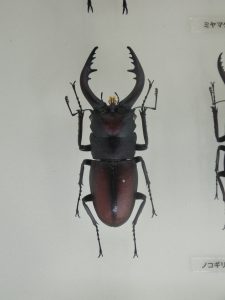
昆虫判定機 answered: Prosopocoilus inclinatus
1-2. Rhinoceros beetle (Japanese species), male, top view
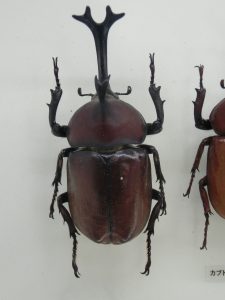
昆虫判定機 answered: Rhinoceros beetle
1-3. Lucanus cervus (European species), male, top view
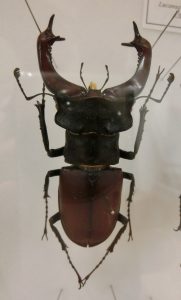
昆虫判定機 answered: Prosopocoilus inclinatus
1-4. Prosopocoilus giraffa (South-Eastern Asia species), male, top view
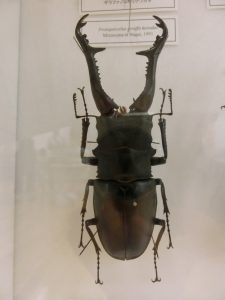
昆虫判定機 answered: Prosopocoilus inclinatus
Google images does not seem to be mature enough to identify species. iNaturalist was close when the picture was foreign species, but was not correct. 昆虫判定機 identified Prosopocoilus inclinatus and rhinoceros beetle correctly. I am not surprised that it failed to identify foreign stag beetles because its scope is only Japanese insects.
Trial 2: Diversity in one species
Stag beetles have diversity in one species especially for mandible size of male. Also female has quite different appearance compared to male.
2-1. Prosopocoilus inclinatus (Japanese species), male with short mandibles, top view
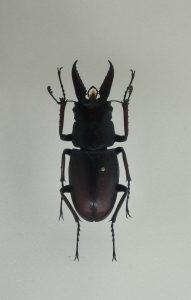
昆虫判定機 answered: Dorcus rectus
2-2. Prosopocoilus inclinatus (Japanese species), female, top view
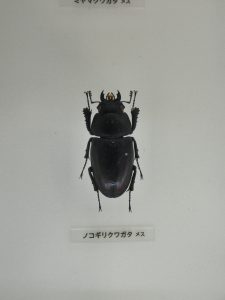
昆虫判定機 answered: Female Dorcus rectus
This is a bit difficult tasks for Google images and iNaturalist because the pictures are all Japanese species. However they even failed to identify the female stage beetle as stag beetles… The answers of 昆虫判定機 were close but not correct.
Trial 3: Diversity in colors
The diversity of colors is one of the attractions of insects. I tried two conspicuously colorful two species in the stag beetle.
3-1. Lamprima adolphinae (Oceanian species), male, top view
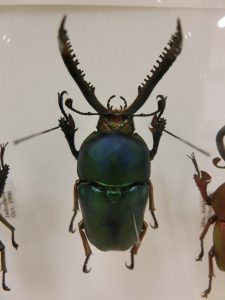
昆虫判定機 answered: Prosopocoilus inclinatus
3-2. Phalacrognathus muelleri (Oceanian species), male, top view
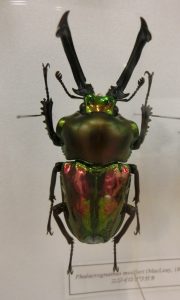
昆虫判定機 answered: Drone beetle
All the three software failed to identify correctly. Incorrect answers with drone beetle and flower cafer were seen and it seems that it was difficult whether to judge by form or by color.
Trial 4: Stag beetles with out of common posture
For computers, it seems difficult to recognize something that is out of common posture (This is presented in TED2015 “How we’re teaching computers to understand pictures?”). What would the answer be if I input stag beetle pictures with side-view or with wings open?
4-1. Dorcus rectus (Japanese species), male, side view
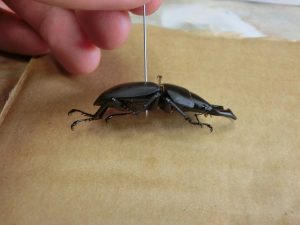
昆虫判定機 answered: Dorcus rectus
4-2. Lucanus maculifemoratus (Japanese species), male with wings open, top view

昆虫判定機 answered: Atypus karschi
For the side view picture, 昆虫判定機 identified the species correctly and the other two identified it as stag beetles. However, it seems much difficult to identify stag beetles with wings open. The answers from Google images and 昆虫判定機 were even not beetles…
Review
I summarized the series of the results. Green color represents the case that the software identified the species correctly. Yellow color represents the case that the software at least identified the picture was stag beetles (or rhinoceros beetles). Red color represents the case that the software at least identified the picture was beetles. Gray color represents the case that the software failed to identify the picture was beetles.
Software with wide scope seems on the way of improvement while the one with narrow scope performed well, if the input was within the scope. Google images does not seem to be mature enough to identify species. I hope the performance will be improved. iNaturalist gave several close answers. My test sets were biased to Japanese species so the result may have underestimated its performance. 昆虫判定機 identified Japanese species well. I am surprised that the software identified Dorcus rectus (Japanese species) from side view correctly.
Identifications of colorful species, female, and flying posture seems difficult. I suppose the difficulty are not due to technical problem, but the fact that the amount of training data was simply not enough (developers have to input vast amount of data to make software more intelligent, as stated in the TED talk).
If you know the name of the insect you found in the field, you will have attachment and it will also serve as a clue to know more. Although it is a field which is hard to invest, I expect that the software of this kind will develop further.